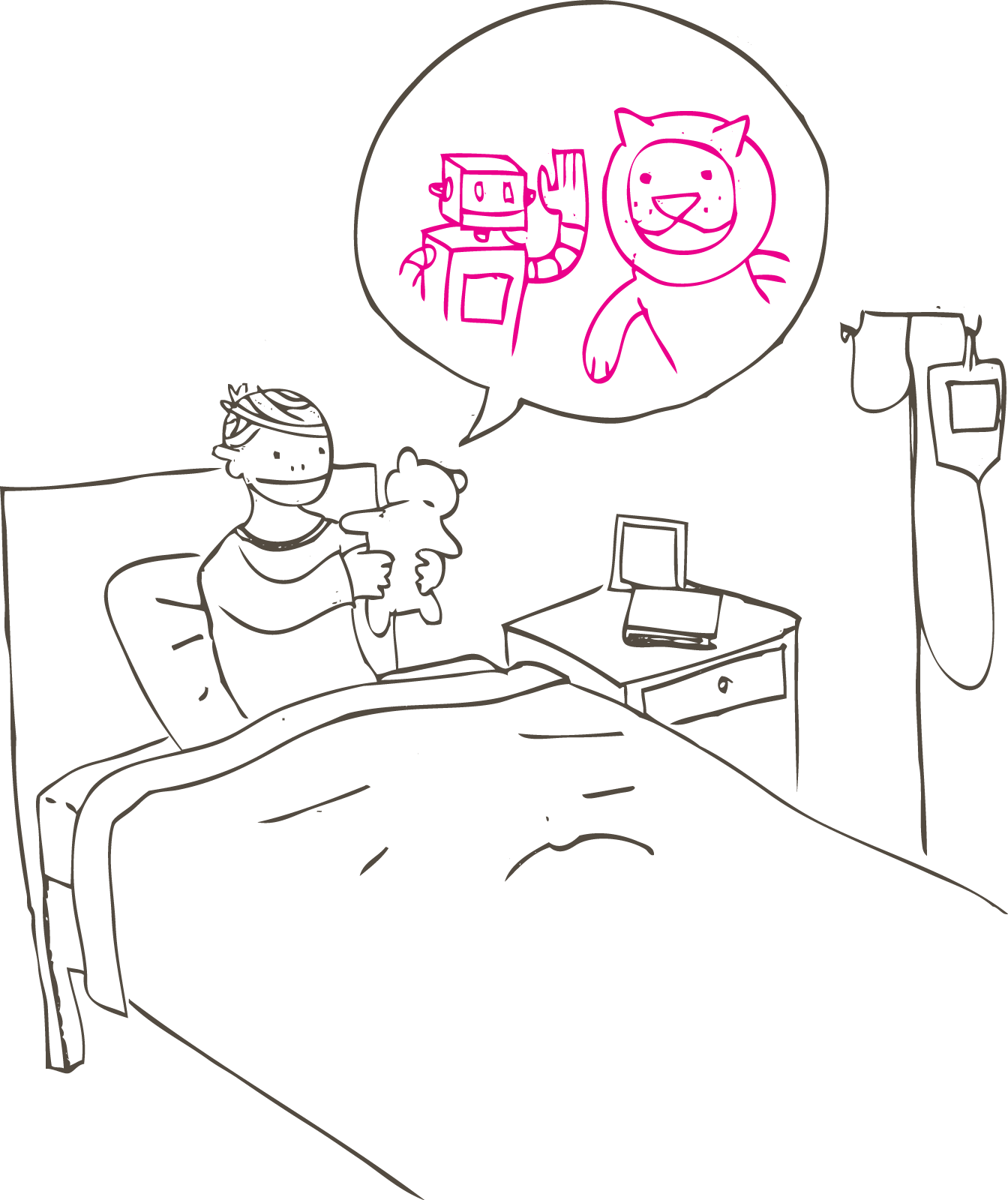TWINKLE
Trusted Worlds as Interactive Kid Learning Environments

RESULTS AND CONSEQUENCES
In the ecosystem that is the Internet of Things, the study highlighted the technological opportunity for embarking upon new partnerships in order to study and develop digital applications for children that guarantee safety, usability and data protection in changing usage circumstances.
As part of the ‘Internet of the Future’ it is necessary to identify a new benchmark model for the reliability of millions of recognisable objects, using models that focus on the needs of people, particularly children, keeping in mind their behaviour and cultural identity.
A future aim of research in this field will be to produce prototypes that will verify the validity, reproducibility and repeatability of the identified model in other sectors.

A favorite toy can provide comfort to a child in distress. For example, a child in the hospital needs comfort not only from his family but also needs to be linked to familiar environments. What if a favored toy could provide this link to comfortable surroundings by communicating these familiar feelings.
 Imagine that a child has a magic white board, a white board that can share his latest illustrations & visual messages with his father who is away on a business trip and also with his mother downstairs preparing dinner. This smart object connects with various other smart objects around family spaces; sharing the child’s creations in different places, it is perfect for a family in the midst of divorce, a family separated by distance, or a parent that travels often and spends time separated his/her child.
Imagine that a child has a magic white board, a white board that can share his latest illustrations & visual messages with his father who is away on a business trip and also with his mother downstairs preparing dinner. This smart object connects with various other smart objects around family spaces; sharing the child’s creations in different places, it is perfect for a family in the midst of divorce, a family separated by distance, or a parent that travels often and spends time separated his/her child.
 What if a toy could enhance a child’s social interaction with another person? A child’s beloved object can facilitate communication between the child and his friend, relative, or teacher through a series of simple gestures. For instance, the child can speak to his plush toy giraffe that records the spoken message and then he stroke’s the giraffe’s ear to send to his babysitter. This concept is a solution to increase a child’s social interaction without the need for advanced technology like a cell phone.
What if a toy could enhance a child’s social interaction with another person? A child’s beloved object can facilitate communication between the child and his friend, relative, or teacher through a series of simple gestures. For instance, the child can speak to his plush toy giraffe that records the spoken message and then he stroke’s the giraffe’s ear to send to his babysitter. This concept is a solution to increase a child’s social interaction without the need for advanced technology like a cell phone.
This concept can also feature a layer of security to provide privacy to the child. If the child wants to share a ‘secret messageâ? he can select a series of particular gestures performed on the object so that no one but the recipient can access. These fun & learned actions can stimulate his memory and help further the child’s learning process.
 What if a toy can become
What if a toy can become
Start
2010
Time
6 Months
Type
2.1 - Feasibility studies
Project value
€ 94.000
Call
Project co-financed within the Innovation Poles of the Piedmont Region (POR FESR 2007/2013, Axis I, Activities I.1.3 - I Annual program for research and innovation projects and services)